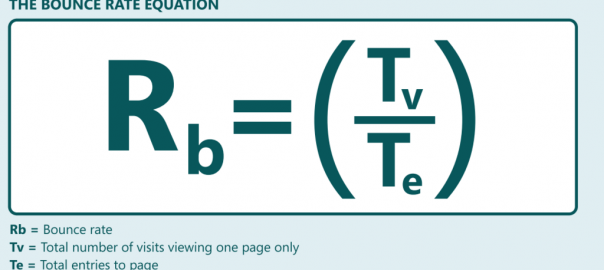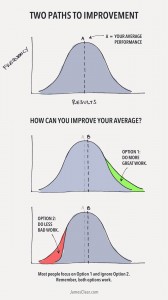Behavioral factors are continually becoming more important for Google and this is the direction today’s SEO is heading. If you want to evaluate the quality of your traffic and check how people interact with your website, fortunately, there is a proper metric for you! It all begins with Google Analytics. Google Analytics is why most of us are familiar with the bounce rate, the key performance metric. Nonetheless, how it is measured and what really affects it, might still seem quite vague. Today, I am going to explain what bounce rate is, what a good bounce rate in your industry should be and, of course, how to reduce it…
Bounce Rate is a measure of engagement that demonstrates the degree to which people are enjoying and interacting with content in a deeper way. – Stephanie Fried, VP of digital insights and marketing at Discovery Communications.
What is bounce rate
Google Analytics defines bounce rate as the percentage of visitors who exited your site from the entrance page without interacting with it. Google’s Digital Marketing Evangelist, Avinash Kaushik, calls bounce rate the “sexiest metric ever” and is a huge fan of it. Watch this funny and educational video to find out why:
A high bounce rate is usually a sign that your website is not user-friendly. Most likely, it has a poor design & usability issues or the content is not what the users are looking for. Bounce rate is an important quality indicator for any marketers who aim to maintain high user engagement and drive conversion.

Bounce rate formula by Kissmetrics
There are 5 scenarios which can be identified as a bounce from a page. When the visitor:
- clicks on the “back” button
- closes a tab or a window
- types a new link in this browser window
- clicks on an external link which opens in this tab.
- is not interacting/ doing nothing for over 30 minutes (there is a session timeout)
Of course, it is most desirable for the initiated browsing session to contain zero bounce and, instead, lead to the viewing of other internal pages.
Adjusted Bounce Rate
For most page types, a standard bounce rate works just fine, but for blogs it might not be precise enough. Standard bounce rate doesn’t take the time spent on site into account, and this is critical for the evaluation of real user engagement. Consequently, when a visitor reads your whole article and then closes the page, he will be recorded as a bounced visitor. Of course, major search engines view whether the particular page meets user expectations by calculating dwell time. Dwell time is the time between clicking on a particular search result, opening it and bouncing back to search.
Unfortunately, you can’t see this unless you implement adjusted bounce rate into your Google Analytics tracking script.

If you’re using bounce rate as a content marketing KPI, it’s a must-do. You can do this by tweaking a one line of code and triggering an event when a user has spent over a minimum amount of time on the site. It usually takes about 10 to 15 seconds for a user to get sufficiently engaged. This solution makes the measure more accurate for content marketing and provides you with a much better understanding of the pages’ quality.
Bounce rate versus exit rate
These two metrics are often confused with each other and a clarification of their distinctions is one of the most popular questions asked concerning Google Analytics.

So, the exit rate is the percentage of visitors who viewed a few pages of your website and then left. The key difference between bounce rate and exit rate is that the exit rate concerns multi-page sessions. The exit rate pertains to users who viewed more than one page during a single session and finished exploring on that particular page. However, similarly to bounce rate, it can also reveal some on-page trouble areas, so it should be evaluated in a navigational context as well.
What is a good bounce rate for your website – benchmarks
According to the metrics of an average website, the [average] bounce rate is 40%. However, this might be a misleading number because a good bounce rate score varies by the type of site, type of page, industry, user intent, brand credibility, and many other factors. Benchmark Averages for Bounce Rate look as follows:

- 40-60% Content websites
- 30-50% Lead generation sites
- 70-98% Blogs
- 20-40% Retail sites
- 10-30% Service sites
- 70-90% Landing pages
Of course, you are going to track your bounce rate against your historical performance and your future goals. However, remember to base your expectations on real data and always look at the given benchmarks.
How to reduce your bounce rate?
Reducing your bounce rate on high-traffic pages is exceptionally important because it means more engaged visitors and, in turn, a higher chance of conversion. There are some major rules that will leverage your usability straight away:
#1 Attract the right visitors
Analyze your traffic because you might be targeting the wrong audience with irrelevant keywords. Rethink the purpose of each page and update it with new content. Make sure you rank high for your branded keywords.
#2 Improve Brand Storytelling
Companies should be communicating with their customers by storytelling. Storytelling can be used to grab the customers’ attention and make them want to interact with a website. Storytelling combines your content structure with the message you are trying to convey so, if you aim to captivate your target users, you need to maintain both. Keep the structure eye-catching and easy, and learn how to tell good, memorable stories. Be honest in your communication. Meet user expectations by making sure that they clearly understand your product and the idea behind your business. This technique is a good marketing strategy for every business, too. And the plus side is, it requires creativity and an imagination, instead of a budget.
#3 Consumers live in their social feeds
Be savvy; take advantage of the potential social channels have to create other valuable opportunities for engaging your customers. This will help to lower your bounce rate. It is increasingly important to be active and responsive on social media because the more compelling and effective your social communication becomes, the better your on-page engagement is going to be. This way, you will grab more of the user’s precious attention.
#4 Develop a Better Web Design to Lower Bounce Rate
One of the biggest causes of a high bounce rate is confusion. Customers get easily frustrated with poorly designed, not user-friendly websites, and there is no mercy. When a website is an obstacle that prevents the finding of crucial information, it’s no wonder that visitors are going to bounce. Maybe there are too many external links that open on the page when clicked? Perhaps distractors like popups, music, streaming videos and along loading time are leaving people with a bitter taste in their mouth? All of these factors influence your bounce rate negatively.
Therefore, simply deliver what the people expect to be delivered. Make sure you provide a clear navigation path and place your search bar in an obviously visible location. Improve your website’s readability. Get rid of unnecessary items like pop-ups that may get in the way of your customer’s journey. Reduce the amount of external links in your copy and make them open in a new tab/window. Speed up your page load time using any plugin that suits you.
Bounce rate is one metric savvy marketers can’t afford to ignore, as it measures how effectively your brand is resonating with visitors. – Mashable
Conclusion
In this article I explained what the bounce rate is and how to adjust it, identified the difference between exit rate and bounce rate, and provided some general rules for decreasing your bounce rate.
What is your method of effectively lowering the bounce rate? Tell us in the comments below.
(232)



